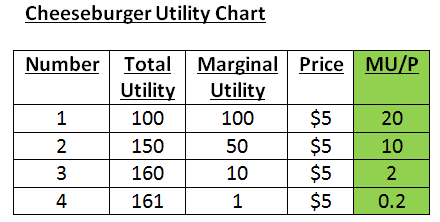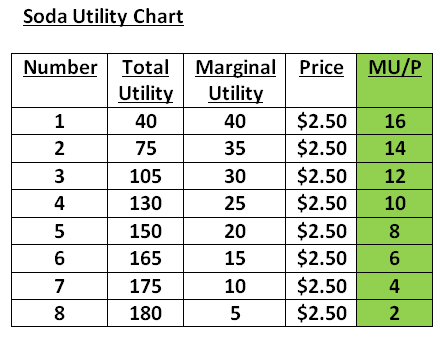4 Things to Know About Consumer Behavior
Updated 7/3/2019 Jacob Reed
1. Why are demand curves downward sloping?
There are 3 reasons why demand curves are downward sloping. The income effect, substitution effect, and diminishing marginal utility cause consumers to demand higher quantities at lower prices and lower quantities at higher prices.

2. What is the income effect?
One reason why demand curves are downward sloping is the income effect. The income effect means that changes in price cause changes in income purchasing power. If a consumer has $10 worth of income and candy bars cost $1 each, that consumer’s income has the purchasing power of 10 candy bars. If the price of candy bars rises to $2 each, the purchasing power of the $10 will only be 5 candy bars. If the price of candy bars falls to 50 cents, $10 has a purchasing power of 20 candy bars. In other words, when prices fall, consumers can afford more and when prices rise, consumers can’t afford as many.
3. What is the substitution effect?
The substitution effect is another reason why demand curves are downward sloping. This effect says that when the price of a good or serves rises, consumers will substitute that good for less expensive alternatives. Conversely, when the price of a good falls, consumers will purchase more of the good in question and fewer of the alternatives. For example, if the price of frozen yogurt rises, consumers will purchase less frozen yogurt because they will buy ice cream instead.
3. What is diminishing marginal utility?
The third reason why demand curves are downward sloping is Diminishing Marginal Utility. This is a microeconomic concept that tells us the benefit (utility) gained by consuming more of a good or service decreases with each unit consumed. So if Jenny eats 1 cheeseburger, she might gain 100 utils (units of satisfaction), eating a second cheeseburger might be worth 50 utils to her, a third worth 10, and a fourth worth 1 util. While her total utility increases with each cheeseburger consumed (100, 150, 160, then 161), the marginal utility (additional benefit) decreases with each cheeseburger consumed. As a result when prices rise, the fewer units are worth buying for consumers.
4. How does marginal utility impact consumer behavior?
Marginal Utility per Dollar is a calculation of a value to price ratio for the consumption of an additional unit of a product. The formula is Marginal Utility divided by Price (MU/P). Using the cheeseburger example above, if each cheese burger costs $5, the Marginal utility per dollar for the second cheeseburger would be 10 utils per dollar (50/$5).
Utility Maximization occurs when a consumer adjusts their spending to maximize their total utility within their given income limitations. Utility maximization occurs when the marginal utility per dollar for all the goods you purchase are equal (MUx/Px=MUy/Py). To simplify, let’s assume Jenny only buys 2 different goods; cheeseburgers and soda. The 2 charts below show her the utility per dollar for both goods.


If Jenny has $20 to spend, she would maximize her utility by purchasing 4 sodas and 2 cheeseburgers. There, the marginal utility per dollar (MU/P) for cheeseburgers is 10 and the marginal utility per dollar for sodas is 10. That would give her a total utility of 280 utils. Given the fact she only has $20, she cannot get more utility than that. She has maximized her utility.
If Jenny’s current consumption was 6 sodas and 1 cheeseburger the marginal utililty per dollar for cheeseburgers (20) would be greater than the marginal utility per dollar for sodas (6). When the marginal utility per dollar for both goods is not equal, a consumer would increase total utility by consuming less of the item with a low marginal utility per dollar and more of the item with a high marginal utility per dollar. In other words, the consumer should buy more of the item giving her a better deal and less of the item giving her a worse deal.
**Note: you could see questions exactly like this where total benefit or marginal benefit are used instead of total utility or marginal utility. Since benefit and utility are essentially synonyms, you will answer the question exact same way.
This method of utility maximization is very similar to profit maximizing combinations and cost minimizing combinations of resources. Producers just calculate the marginal product per dollar or marginal revenue product per dollar for productive resources instead.
Multiple Choice Connections:
2012 Released AP Microeconomics Exam Questions: 49, 51
2008 Released AP Microeconomics Exam Questions: 5, 49
Up Next:
Review Game: Best Combinations review (1st 5 questions)
Content Review Page: Cost Curves, Revenue Curves, and Profit
Other recommended resources: Jodi Econ Girl
